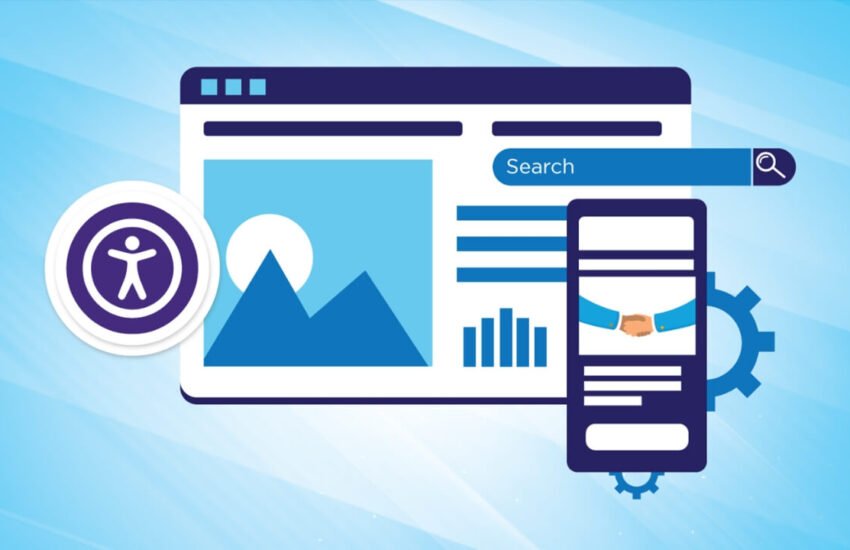Making your website accessible in the current world of digital transformation is more than an inclusive idea; you will also get to enhance the optimization of your web project. SEO accessibility is defined to be the act of creating websites, which are simple to comprehend and use by both the search engines and individuals with impairments. Although accessibility features, including providing alt tags to images, correct heading structures, and semantic HTML among others, have always been paramount to individuals with disabilities, they also directly correlate with strategies that raise ranking in search engines, hence, optimizing search engines. Here at this guide, we will learn about why SEO accessibility is critical, how it can help you rank higher and the proper steps that you must take in order to make your site friendlier both with search engines and to all users.
What is the SEO Accessibility and Why is this Important?
SEO accessibility combines two important factors, and they are making your site accessible to the needs of people having disabilities, as well as optimizing the popularity of your site based on the search engine technologies. Accessibility is more than simply doing the right thing or taking part in something that is legally binding, and it can even affect the performance of your site in your search engine rankings. Such algorithms are provided by search engines, such as Google, and it is better to have websites having a proper structure and easily navigating pages. By ensuring your site is optimized with regard to SEO accessibility you are developing a usable and discoverable site.
Accessibility is useful to user experience (UX) as well. An example of this is that when your site is user-friendly, there are higher prospects of the users remaining in your page, minimizing to view other content in the page and converting. Consequently, your site will get improved engagement rates such as smaller bounce rates, longer visits, and longer page stays–all of which are rewarded by higher rankings by the search engines.
The way SEO Accessibility improves the Research
Clearly and logically organized content is one of the main ways in which the SEO accessibility can increase the ranking. The crawling of the web sites is conducted hierarchically by the search engines like the Googlebot. When your site is structured with the right heading tags (H1, H2, H3), semantic HTML and elements (such as an <article>, <section>, and <header>), Google will be able to find the hierarchy and relevancy of your content. This aids your pages to be indexed correctly and ranked effectively in respect to pertinent queries.
In the same way, the screen readers rely on similar logical structure. The result of making yourself more accessible is that now the users with disabilities will not have trouble moving around your site, but you are also making it easier on search engines as well to better read and rank your site.
SEO Semantic HTML
Important to both search engine optimization and accessibility is semantic HTML. An appropriate use of such tags as <main>, <header>, <footer>, and <nav> enhances accessibility not only to users with the help of assistive technologies but also increases the SEO performance of your site. Google also gives credit to sites that are well organized and contain semantic HTML, since it makes their crawlers index the content in an efficient way. This implies your web site chances of ranking high on pertinent terms are high.
Also, marked up with clear labelling which not only includes accessible features such as alt text on images or ARIA (Accessible Rich Internet Applications) labels but will benefit you twice; making your site accessible to all and search engines should find it easier to comprehend.
On-Page Accessibility Features Which Enhances SEO
The most effective, and one of the easiest accessibility measures, is to use alt text inyour images. Alt text has two purposes; to give a description to the screen readers to the visually impaired users on your page and enable the search engines to crawl your images responding to the search request. In the absence of alt text search engines lose an opportunity to rank your visual content and disabled users lose context.
Best practice would be to have concise alt text that goes relevant to the content and introduces the desired keywords where applicable, meaning; it is user friendly and search engine friendly.
Descriptive Anchor Text
In the creation of internal and external links, do not provide generic phrases such as, click here, read more, etc. These do not offer any context to search machine and screen machine. Instead, utilize descriptive anchor text that specifically points what users will see in case he/she clicks on the link. As it would be, in the example, one could say, rather than click here, where necessary use learn more to boost SEO page ranking by making your site accessible. This makes the user experience better, and gives very useful context to search engines, enhancing your SEO.
Logical structure and Header Tags
It is imperative to use header tags (H1, H2, H3, etc.) both in terms of SEO and accessibility. They establish a sense of hierarchical content and thus, it is simpler to comprehend the format of your page by those search engines as well as by screen readers. Web page with well-defined structure will be built with the use of correct header-tags, which will allow people to navigate to specific information using the minimum number of clicks. This clear organization is beneficial to search engines too since they could distinguish the most significant information, making it rank higher in the search by its users.
As an example, this would be more accessible and seo friendly: the main title should be only one H1 tag and subheadings should be sequenced using H2 tags. Not jumping levels of heading and using descriptive headings not only improve the experience of the user, but also the ease with which the page can be searched.
The Best Approaches in Technical SEO and Accessibility
Since mobile-first indexing has become such an influential factor in Google ranking, it is essential to design a site that will be suitable to use with mobile devices. A user-friendly, responsive design that supports mobile users; with big tap targets, intuitive navigation, and readable text to consider the audience, with poor sight, or on voice commands. In being mobile-friendly as a priority you will be able to gain accessibility by more users but also comply with the Google algorithm that rewards mobile friendly sites.
ARIA Dynamic Content Attributes
The ARIA attributes are used to allow the screen readers to read dynamic content that cannot always be represented in HTML. A case in point, applying aria-label to explain a button or a link gives a context to the visually impaired users. Also, the implementation of aria-expanded that can be placed on the collapsible menus and aria-live that can be placed on the use of live regions can aid in enhancing interpretation of page changes done on dynamic pages via both the user and search engines. Used correctly, ARIA attributes have the potential to enhance accessibility and SEO, because they increase the ease of navigation and interpretation of your site.
Keyboard Accessibility
One key accessibility factor that you need and that is beneficial to your SEO rating as well is to ensure that your site is fully keyboard navigable. The pages requiring a mouse can be irritating to the motor disabled user and can even hurt the engagement metrics resulting in low rankings. Make all interactive features (such as links, buttons, and forms) navigable with keyboards and it will add benefits to the user experience and business ranking.
SEO Accessibility: The Rising Threat SEO Compliance: The Rising Threat
With the increasing level of accessibility regulations, there is mounting legal pressure on businesses to act by adhering to the Americans with Disabilities Act (ADA) and Web Content Accessibility Guidelines (WCAG). According to a survey conducted in 2024, more than 4,000 lawsuits established to sue the websites to meet accessibility criteria. Something, other than the legal implications, accessibility compliance can also provide additional SEO-value, since Google is putting a high emphasis on user experience and accessibility in search ranking results.
An Accessible Internet as a Driver of Business
More conversions and revenue can also be activated by increasing accessibility. An Acquia research reveals that 51 percent of people with disabilities would actively shop elsewhere in case of encountering inaccessible websites, and 42 percent would desert the brand altogether due to inaccessibility. The most accessed websites prioritize accessibility and they thus experience an increase in visitor engagements, low bounce rates and conversion rates. Easy to navigate websites not only meet the needs of a wider market but also boosts the reputation of your brand, spurring improved performance of the business.
Summary: The Accessibility of SEO is the Main Ingredient to the Increase in Rankings and User Accommodation
Optimization to SERPs is not a luxury attribute of the contemporary internet page- it is a must. Putting attention on ensuring your site is accessible, SEO-neutral, will ensure a better user experience, greater crawlability and higher ranking. Giving your site greater accessibility i.e a cleaner semantic html; correct headings; alt text; keyboard navigability does not just aid the people with disabilities to use your site, but helps your search engines to better interpret your content and hence fare better in the search results.
In the end it is the right thing to make any website accessible to all users–it is also a good SEO move. Accessibility leads to win-win as it will not only benefit the users or improve their search rankings but also drive conversions and necessary compliance. Make SEO accessibility a priority today and watch the measurable results your business will notice in all facets of the performance of your site.
you may also like
Google Backtracks on URL Shortener Service Means to SEO



